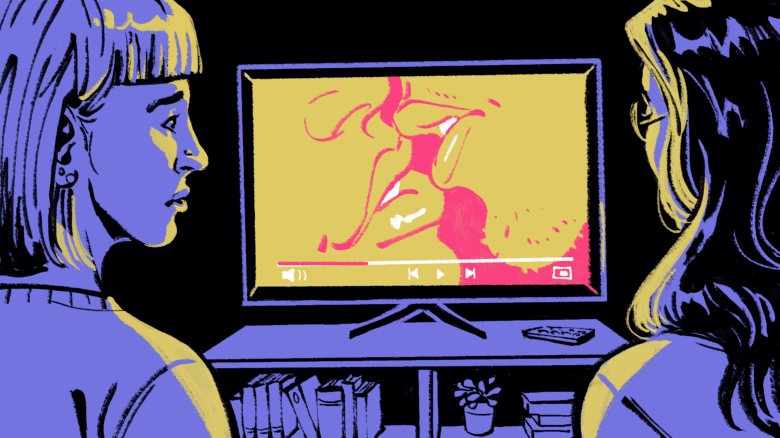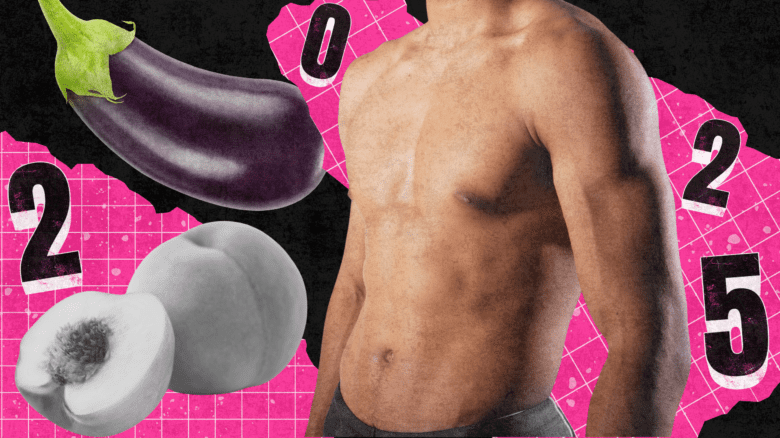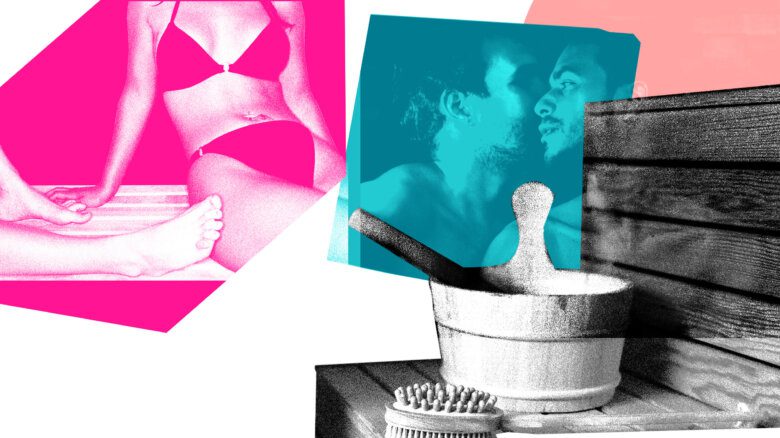For over a century, 1896’s The Kiss, directed by William Heise, has been universally accepted as cinema’s first on-screen kiss. In the 16-second clip, actors May Irwin and John Rice re-enact their performances in Broadway musical The Widow Jones, exchanging playful banter before lovingly embracing. Its undeniable charm—and its reputation as the first scene of its kind—has earned the film substantial prestige, including a spot in the U.S. Library of Congress.
Film historians have also long debated what the first gay filmed kiss may have been—a first that is more subjective. Many have wondered, does “gay” imply romance, or should any same-sex kiss count? Depending where that line’s been drawn, cinema’s first queer kiss milestone has been credited to a few films: most often, 1916’s Intolerance, 1922’s Manslaughter or 1927’s Wings. These early films were mainstream hits that avoided controversy by way of framing: the kisses were comedic, fraternal or cautionary tales about the dangers of moral degeneracy.
But in 2011, a film was unearthed in the Boston Public Library that settles the matter for good: a short sequence of two nude women standing a step apart, then pulling one another in for an obviously romantic kiss.
This untitled film was produced in the mid-1880s—predating even the first straight filmed kiss by a decade—but despite appearing far more scandalous, it was completely overlooked upon its original release. The kiss was a queer milestone, and a pivotal moment in film history, but almost nobody has heard of it. How did this happen?
To answer this question, we first need to understand how and why the kiss was filmed. We owe the film to Eadweard Muybridge, the eccentric photographer best known for his seminal The Horse in Motion photographs.
Born in 1830 as Edward Muggeridge, he respelled his name “Eadweard” to match a 10th-century English king. Muybridge was an egotist driven by a desire to go down in history, which he ultimately would in 1878, when he became the first person to achieve “instantaneous photography.”
Muybridge had been tasked by railroad baron Leland Stanford with capturing still photographs of Stanford’s horse, to clarify how horses galloped, a feat that was impossible with existing technology—insensitive cameras and imprecise operators meant that a single shot took minutes to capture.
Following several failed attempts, Muybridge devised a string of innovations that allowed him to take twelve photos of the horse in under a second. This was a staggering achievement—the photos froze and immortalized the galloping animal with a clarity that had been impossible even a year earlier. They became world-famous, and earned Muybridge the almost superhuman moniker, “the man who stopped time.”
In 1883, some influential East Coasters invited Muybridge to continue his experiments at the University of Pennsylvania, this time with a focus on humans. Capturing human movement on film required so much light that Muybridge built his studio on a downtown rooftop, where he shot midday over UPenn’s summer breaks.
The photos were to serve as anatomical references for physicians and artists, to demonstrate how bodies move. Over the next six years, Muybridge recorded every kind of motion he could think of. He had his models climb stairs, wield pickaxes, roll their wrists and carry baskets on their heads. Most models were nude, for maximum detail. His work resulted in over 100,000 photos encompassing at least 781 types of movement.
When the time came to photograph a kiss, there was no doubt: it had to be between female models. In 19th-century America, any other configuration would’ve been obscene. Back then, sexuality was thought of as a universal masculine inclination that women merely went along with, so any kiss involving a man, even fully clothed, would’ve been risqué.
Instead, Muybridge enlisted two women who often posed together for these intimate studies, and who were only credited as “Model One” and “Model Eight.” Both were slim, dark-haired and young. Model One was 35, while Eight was between 17 and 24. At the time, the idealized white woman was understood as an asexual being, so a kiss between these two was innocent by definition. As easy as that, One and Eight were directed to stand a pace apart, shake hands and come together for a kiss.
Of course, since women’s sexuality went unacknowledged, artists and anatomists didn’t need a diagram of an “authentic” lesbian kiss. To make the sequence useful, Muybridge directed one of the women to assume a masculine role, courting her partner actively and physically dominating the frame.
“If Muybridge saw his models as equals, we would know their names.”
There’s a level of detachment in this pantomimed heterosexuality that makes it hard to identify with; when I kiss my partner, or when our friends kiss each other, we’re much more at ease.
Viewers have observed that Muybridge’s Kiss crams the women into an unimaginative heterosexual dynamic in the same way mainstream lesbian porn tends to. It’s tempting to speculate that Muybridge posed them like this because it aroused him, but it’s ultimately irrelevant: objectification is an expression of power, and it’s obvious he craved power. If he saw his models as equals, we would know their names.
Muybridge’s power play obscured whatever emotional truth we might’ve gleaned from this film. We can’t know who One and Eight were, whether they were queer or how they wound up on that rooftop that day. All of the women’s personas except their bodies have been scrubbed from the frame.
Since Muybridge’s kiss film was one of nearly a thousand motion experiments, it never received as much attention as 1896’s Kiss (a runaway hit), or 1927’s Wings (the first Best Picture honouree). Offering less spectacle than The Horse in Motion, Muybridge’s Kiss fell into obscurity for nearly a century; its 24 frames sat still in a vast catalogue along with Muybridge’s other motion studies that are mostly found in university libraries.
It’s in those libraries where artists have, now and again, rediscovered it. Filmmaker Thom Andersen was likely the first to bring the kiss to life in 1975 for his documentary Eadweard Muybridge, Zoopraxographer, and more recently, artist Dave Gordon brought it to wider attention in 2011, after discovering a print in the Boston Public Library. He’d been paging through Muybridge’s catalogue to find photos he could splice into his animated film Victorian Dream—which was to be constructed entirely out of Muybridge’s motion studies. Victorian Dream was ultimately abandoned, but recognizing the kiss’s historical significance, he reconstructed it into a stand-alone video and shared it online.
Thanks to Gordon’s reanimation, Muybridge’s Kiss was listed on film networking site Letterboxd, where it first caught my eye thanks to a small, but vocal, following among queer women. With so much of our history lost, erased or ignored, this undeniable landmark feels precious.
I see an urgency in sharing the kiss with new generations, wresting the kiss out of Muybridge’s hands and returning it to its rightful owners: the women in the film, and those of us who identify with them. While we can’t bring One and Eight back, we have a chance to keep them moving—into new corners, past brighter horizons, outside the bounds of Muybridge’s frame. I think we owe it to them.
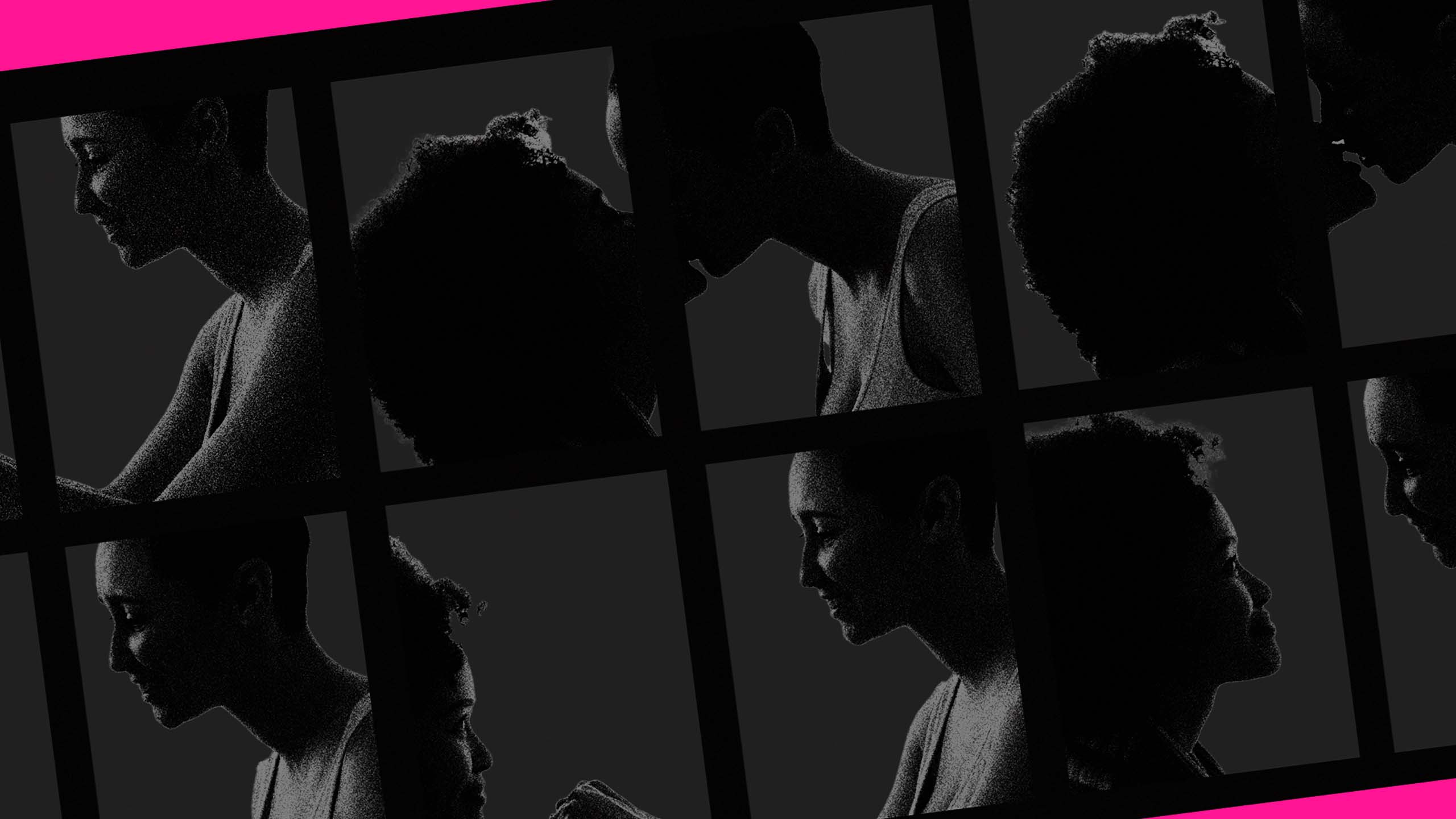
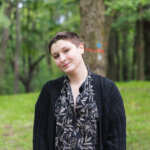
 Why you can trust Xtra
Why you can trust Xtra